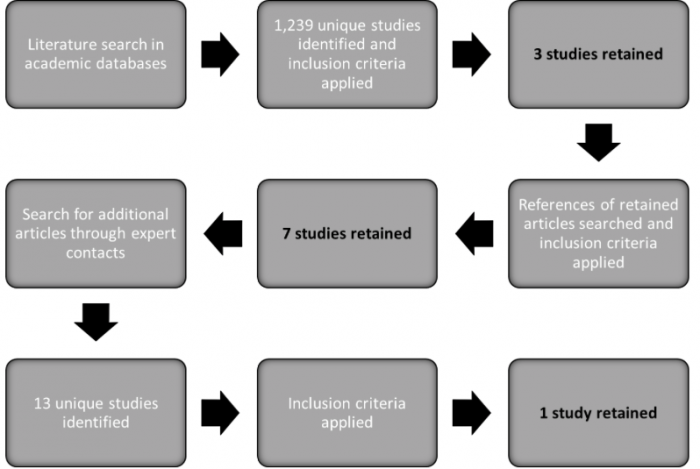
In 2016, over three million children in the United States were subjects of a child protective service (CPS) investigation. One in five of these children were identified as victims of child maltreatment, with most being victims of neglect, followed by physical abuse and sexual abuse.
Although some of these children remained home with their caregivers following the investigation, in cases where investigation findings indicated the child was seriously harmed or at risk of being harmed, a CPS decision was likely made to place the child in out-of-home care (e.g., foster care) in an effort to ensure his/her safety.
In addition to working to maintain child safety, primary goals of CPS include achieving timely permanency for children in foster care and improving child and family well-being. Thus, CPS agencies work to provide services to children and their families, both in their home and in foster care. These services aim to prevent future occurrences of child abuse/neglect and remedy conditions that brought children and their family to the attention of CPS. Often, such conditions include, but are not limited to, problematic substance use, domestic violence, poor mental health, poverty, and criminal justice involvement.
Given the complex needs of families involved with CPS, the Fostering Connections to Success and Increasing Adoptions Act of 2008 (P.L. 110-351) mandates that CPS agencies collaborate with other systems and agencies to improve child welfare services and outcomes. Despite such policy, researchers had not systematically investigated the impact of such collaborations on CPS outcomes.
In the study titled “A systematic review of the effectiveness of interagency and cross-system collaborations in the United States to improve child welfare outcomes,” published in Children and Youth Services Review, we systematically examined existing literature to study the effect of interagency/cross-system collaborations on safety, permanency, and well-being for families involved with CPS. We also wanted to understand how these outcomes may vary depending on collaboration focus, collaboration level, and collaboration intervention strategy.
Of the 1,252 research articles identified during our search for relevant articles, we found only 11 articles that warranted inclusion in the study based on pre-determined criteria (see Figure 1). Thus, relatively few researchers focused on CPS client outcomes related to interagency/cross-system collaboration. Our assessment of the literature led us to believe that most research on this topic relates to (a) factors that facilitate and/or impede the collaboration process; (b) outcomes related to CPS practice and/or policy; or (c) CPS populations, not in the United States.

Figure 1: The diagram depicts our search and review strategy. We searched the following databases for research articles: PsychInfo, Social Service Abstracts, CINAHL, ERIC EBSCO, Medline, and Sociological Abstracts. Our search was limited to English-language articles only and academic journals. To be included in the review, studies had to meet the following criteria: (1) included participants involved with a CPS agency in the U.S.; (2) assessed if participants received collaboration intervention; (3) included a comparison group of participants who did not receive collaboration intervention; (4) assessed influence of collaboration on a CPS outcome(s) related to child/family safety, well-being, and/or permanency; and (5) had at least 2 comparable studies with similar collaboration strategies and outcome(s). Image courtesy Ijeoma Nwabuzor Ogbonnaya
All 11 articles identified in our search were related to substance use. We did not find any, or enough articles that allowed for comparisons, related to other parental risk factors associated with CPS involvement (e.g., risk factors related to domestic violence, housing, education, physical health, mental health). Seemingly, there is a gap in knowledge related to CPS interagency/cross-system collaborations outside of the substance use field. This work sets the stage for researchers to conduct more studies in these areas.
The most common types of CPS collaboration intervention strategy we identified incorporated a team approach that involved a multidisciplinary group of individuals (e.g., families, treatment providers, mentors, and the courts) uniting to combat caregivers’ substance use and improve CPS outcomes. Explicitly, we identified two intervention approaches: (1) family drug treatment court (FDTC) and (2) recovery coaches (primarily used in CPS agencies located in Illinois). Findings from our analyses suggest that both intervention strategies are effective at improving CPS outcomes related to caregiver well-being and child permanency, especially FDTC.
Caregivers involved with CPS who received an FDTC interagency/cross-system collaboration intervention were three times more likely to enter substance use treatment and two times more likely to complete substance use treatment than caregivers involved with CPS who did not receive an FDTC intervention. These families were also two times more likely to reunify with their children when placed in foster care.
Our findings held regardless of the level of collaboration (ranging from lower levels of collaboration involving no sanction for non-compliance to the highest levels of collaboration involving the creation of a new joint identity) and variations in the structure and the process of FDTCs. Thus, it appears that FDTC may be a viable interagency/cross-system collaboration intervention for dealing with substance use issues among families involved with CPS; and, CPS agencies can largely benefit from this type of collaboration.
These findings are described in the article entitled A systematic review of the effectiveness of interagency and cross-system collaborations in the United States to improve child welfare outcomes, recently published in the journal Children and Youth Services Review. This work was conducted by Ijeoma Nwabuzor Ogbonnaya and Annie J. Keeney from San Diego State University.









